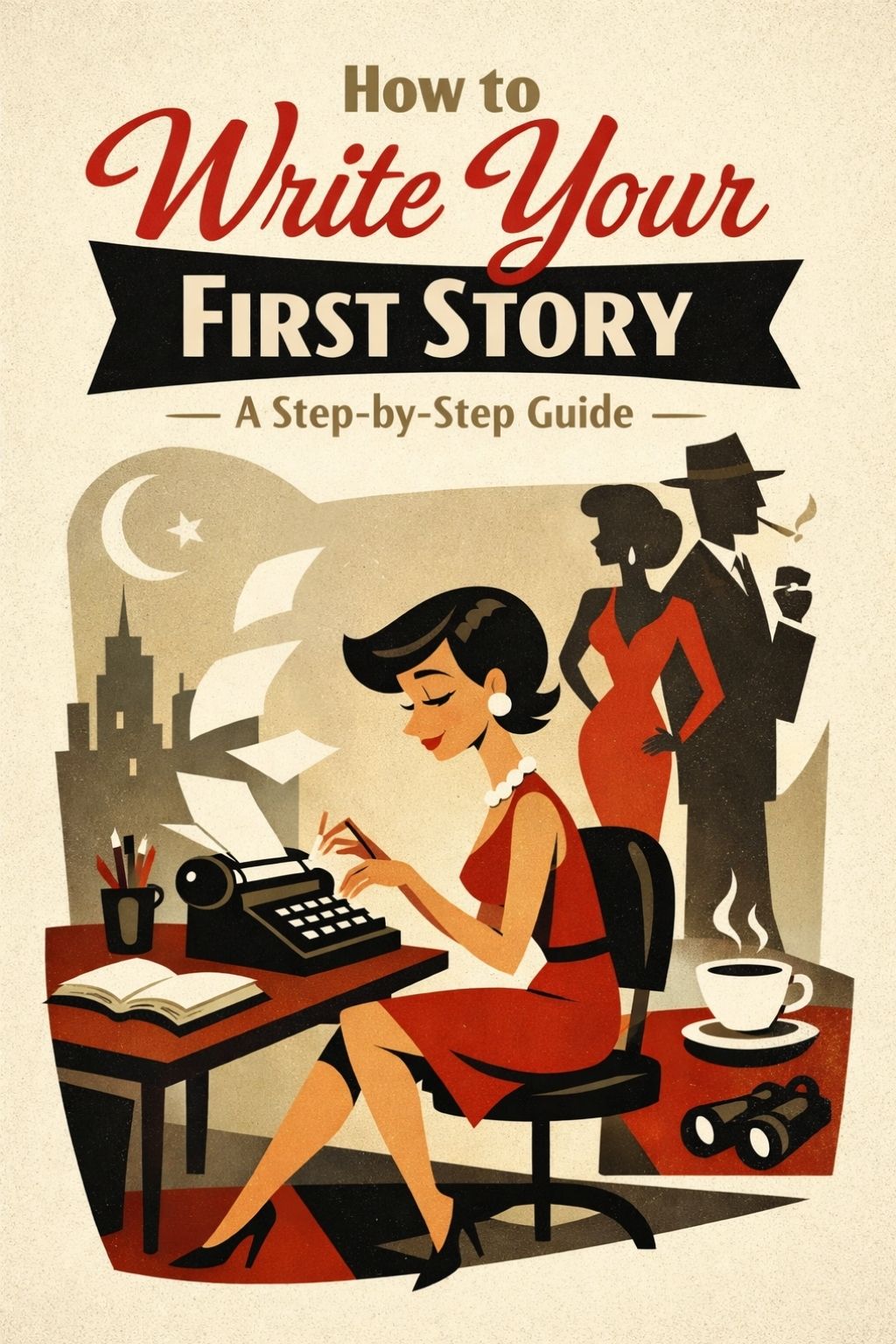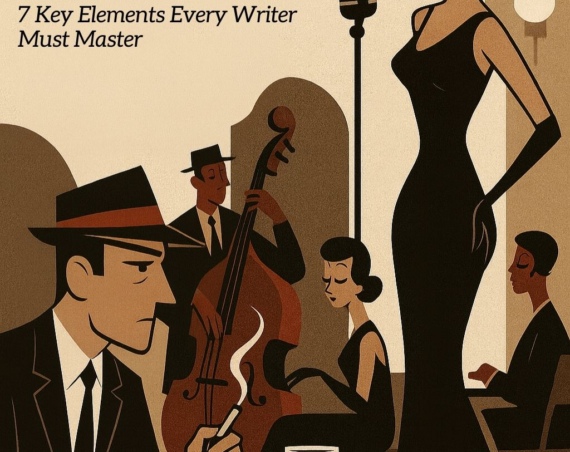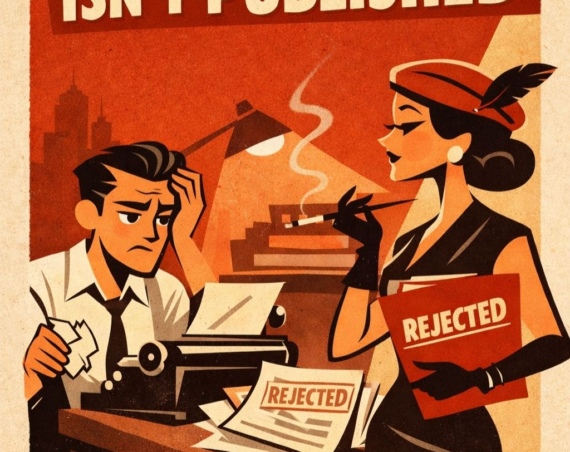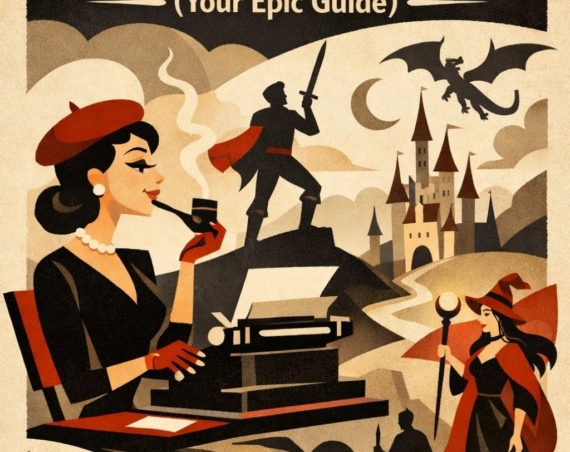Every writer, at some point, faces that inevitable question: “How can I start writing a story?” It’s a question that lingers, curious yet daunting, for anyone who dreams of creating worlds out of words. People have often asked me the same, and depending on my mood, I’ve either spun a poetic line like “From the dusty streets of imagination” or enthusiastically recommended a few of my favorite books to spark their creativity.
Truth be told, I didn’t set out to answer this question when I first began writing. Writing found me before I even realized what it was—a natural extension of thoughts and feelings spilling onto paper. But as I grew more intentional about storytelling and the craft behind it, I revisited my early days, retraced my path, and uncovered the subtle milestones that shaped my journey.
In this article, I’ll unravel the mystery behind that age-old question and share the steps that helped me turn a blank page into stories that resonate. My hope is to spark something within you—a nudge, a whisper—that encourages you to begin your own storytelling adventure.
The Basic Structure of a Story: Beginning, Middle, End
When I first started writing, I didn’t think about storytelling as being as intricate as I do now. However, my early pieces had the fundamental structure needed to be called stories. Each one began at a certain point, progressed to a middle, and concluded with a resolution. This simple structure was my first guiding principle.
The first story I ever wrote was a recollection of a trip to a water park with my cousins who were close to my age. Here’s how the beginning, middle, and end structure played out in that story:
- Beginning: I wake up one day and discover we’re going to a water park I’ve heard so much about.
- Middle: We get lost trying to find the park and cause all sorts of mischief because we’re just kids.
- End: Eventually, we overcome the challenges, return home, and gain our first taste of independence without adults around.
In stories, characters typically start in a routine—their lives are predictable and ordinary. Then, an event disrupts this routine, creating conflict. By the end, things often return to normal, but the character is forever changed, having gained new experiences and perspectives.
How to Start Writing a Story
Now that we understand the basic structure of stories, let’s discuss how you can use this structure to start writing your own.
Step 1: Choose a Memory
The closest and simplest source of inspiration is the treasure trove of memories stored in your mind. When someone asks me how to choose a topic or find inspiration for a new novel, I usually say:
“If you’re looking for a story idea, you don’t need to do anything special—just live. Life itself provides plenty of material.”
But with so many events in life, how do you pick the right one?
Our lives often revolve around three types of events:
- Everyday happenings you’d share casually, like sending a letter to the wrong recipient at work, almost causing chaos.
- Personal experiences too intimate to share, like the fear of confessing your feelings to someone who’s already in a relationship.
- Routines that repeat daily, like waking up, eating, exercising, and sleeping.
If you set aside daily routines, most other events have the potential to become stories. Select one event and write about it in detail, capturing it exactly as it happened.
At this stage, you’ve chosen your memory and completed the first step.
Step 2: Rewrite the Memory
Next, structure your memory into a beginning, middle, and end. Then, rewrite each section to transform your memory into a complete story.
- Beginning: Start with an ordinary day that’s suddenly interrupted by an event that sets the story in motion. The character begins thinking it’s just another normal day until something changes, throwing life off course.
- Middle: This part covers the journey from the initial disruption to the height of the conflict. Here, you’ll introduce obstacles. A simple way to add obstacles is to ask, “What if?”
For instance, in my water park story, we didn’t run out of money in real life. But in the rewritten version, I added a subplot where we lost our money to make things more challenging. Similarly, while we didn’t have to cross a busy highway, I introduced this peril in the story. These compounded problems built up to a climax where it seemed impossible to move forward.
Another effective way to heighten conflict is by introducing an antagonist whose goals directly oppose those of the main character. This character can create additional hurdles and deepen the struggle.
- End: From the story’s climax to its final line, focus on resolving the conflict. Think about how your character overcomes obstacles and returns to a sense of normalcy. Draw from your memory to see how the real-life challenges were resolved.
In my first story, the protagonist crosses the highway and resolves the money issue by selling his watch. Finally, everyone reaches the water park and returns home safely.
Step 3: Reflect on the Impact of a Memory
Look at your journal or diary. These entries remind you of how much you’ve lived and how your experiences have shaped you. Every moment—especially the difficult ones—contributes to personal growth.

The same applies to your story’s protagonist. As the character navigates challenges, they come closer to understanding the world around them. Your job as a writer is to guide them through moments of truth and realization, even if it means confronting pain and hardship. By doing so, your readers will embark on the journey alongside your character, experiencing those epiphanies together.
Two Essential Tips for Aspiring Writers
- Be Honest
When I first read my story to my classmates, they were enthralled. As I stole glances at their faces, I noticed how eager they were for the next part. Reflecting on this, I realized it wasn’t just the technical aspects of my writing that resonated with them—it was my honesty.
I didn’t portray myself as an invincible character. Instead, I acknowledged my weaknesses and showed how, in the depths of despair, I found a faint glimmer of hope and decided to follow it. This authenticity drew them into my narrative.
Readers crave those brutally honest moments when you lay your soul bare. Otherwise, your story risks becoming just another boastful tale in a sea of shallow narratives.
- Don’t Fear Judgment
I was initially surprised when Neil Gaiman wrote about the courage needed to face judgment as a writer. At the time, I thought, “Why would writing require bravery? Everyone loves what I say.” But I hadn’t yet confronted my true self—I had only shared the parts of me that made me look good.
It’s easy to write about things you know will be praised. True courage lies in sharing your flaws with the world—even with strangers. It’s like confiding in a friend about a mistake you made, fearing they might judge you, yet deciding to speak up anyway because the words feel stuck in your throat.
To write honestly, you must summon this same bravery. Share your vulnerabilities with readers who don’t even know you. It’s terrifying, but it’s also liberating. And when you do, you’ll receive messages like:
“Thank you for putting into words what I couldn’t say.”
“I’ve carried this in my heart for years but never knew how to express it. You made me feel less alone.”
Final Thoughts
In this article, I’ve shared a simple method to help you start writing stories. By drawing inspiration from your own life, rewriting those memories, and introducing conflict, you’ll take your first steps toward professional storytelling. Remember, honesty and courage will make your stories truly resonate with readers.




